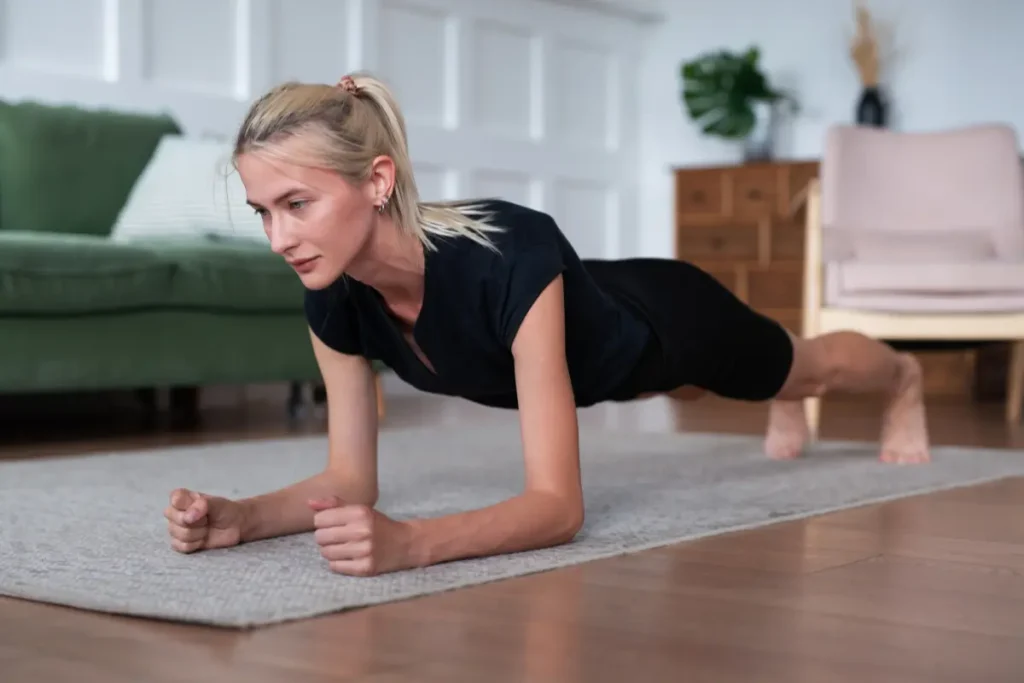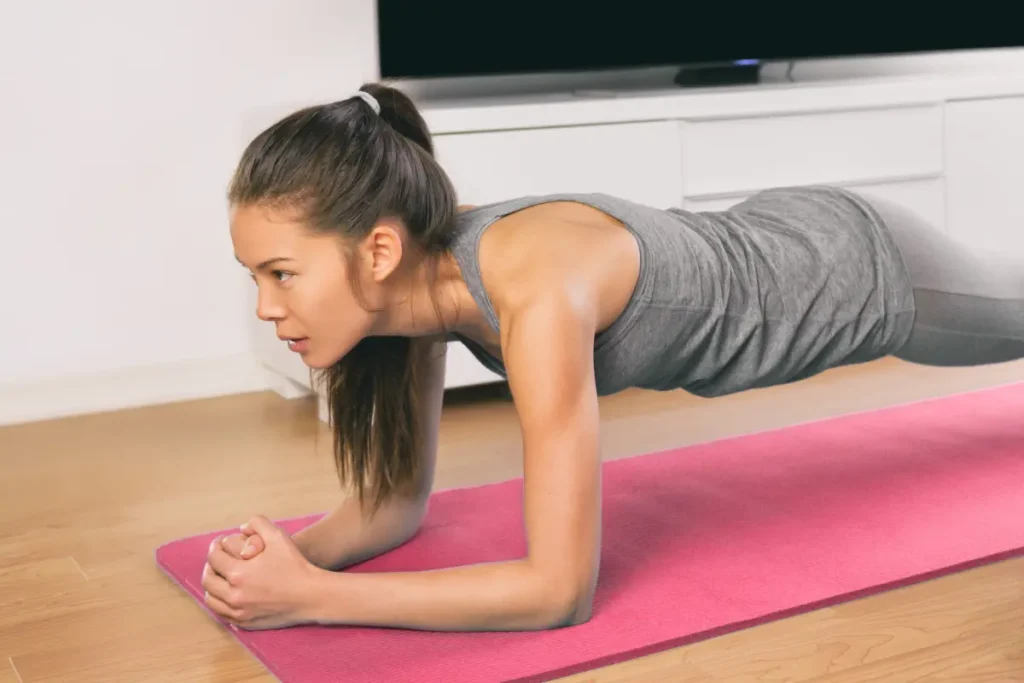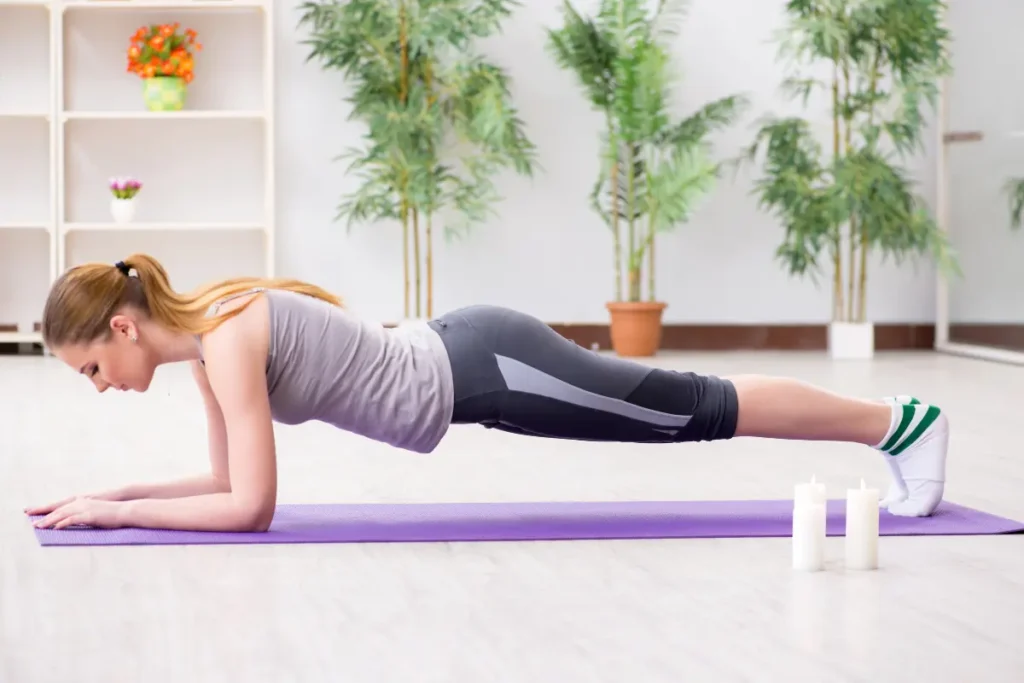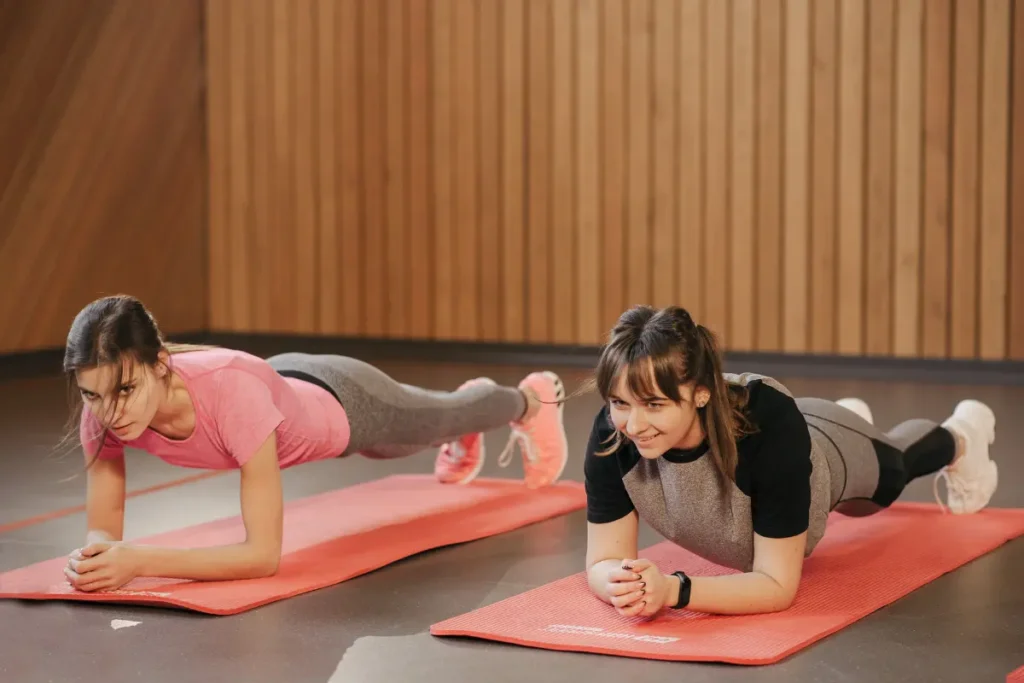Are you looking to strengthen your core, improve your posture, and enhance your overall fitness?
Look no further than the humble plank.
This straightforward yet highly effective exercise is a fantastic addition to your fitness routine.
In this article, we’ll guide you through how to do a plank in perfect form, according to a seasoned trainer.
No jargon, no complicated instructions – just simple, easy-to-understand tips to help you achieve the best results.
What is a Plank?

Before we dive into the details of performing a perfect plank, let’s start with the basics.
A plank is an isometric exercise that primarily targets your core muscles, but it also engages your shoulders, back, and legs to a certain extent.
Isometric means that you hold a static position, rather than moving through a range of motion.
The Perfect Plank Form
To get the most out of your planks and avoid common mistakes, follow these simple steps:
1. The Setup
Begin by getting into a push-up position with your arms shoulder-width apart and your palms flat on the floor. Your body should form a straight line from your head to your heels.
2. Engage Your Core
This is the key to a successful plank. Tighten your abdominal muscles as if you’re trying to bring your belly button toward your spine.
Your core should be firm, and your back should be flat.
3. Maintain Proper Alignment
Your head should be in a neutral position, in line with your spine.
Keep your gaze down at the floor to avoid straining your neck.
Your shoulders should be directly over your wrists, and your hips should be in line with your shoulders and heels.
4. Leg Position
Your feet should be close together.
If it’s more comfortable, you can also do a plank with your feet hip-width apart.
5. Breathe
Remember to breathe steadily and avoid holding your breath.
Inhale and exhale slowly as you hold the position.
6. Duration
For beginners, start by holding the plank for 10-15 seconds and gradually increase the duration as you get stronger.
Aim for a target of 30-60 seconds, or even longer, as you progress.

Common Mistakes to Avoid
Now that you know how to do a plank correctly, let’s go over some common mistakes that you should steer clear of:
1. Sagging Hips
One of the most prevalent mistakes is allowing your hips to sag.
This not only reduces the effectiveness of the exercise but can also lead to lower back pain.
Keep your hips in line with your shoulders and heels.
2. Rounding Your Back
Maintaining a straight back is crucial.
Avoid rounding your back or arching it excessively.
Engage your core to keep your spine in a neutral position.
3. Protruding Butt
Conversely, sticking your butt up in the air is another mistake.
Keep your body in a straight line from head to heels.
This ensures that your core muscles are engaged properly.
4. Neglecting Breathing
Don’t forget to breathe! Holding your breath can lead to dizziness and decreased endurance.
Inhale and exhale naturally as you maintain the plank position.
5. Placing Hands Too Far Forward
Your hands should be directly under your shoulders to maintain the right alignment.
Placing them too far forward can strain your shoulders and wrists.

Plank Variations
Once you’ve mastered the basic plank, you can add some variety to your routine by trying different plank variations:
1. Side Plank
Shift your weight onto one arm and turn your body to the side, raising the other arm toward the ceiling.
This variation targets your obliques and helps improve core stability.
2. Forearm Plank
Instead of using your palms, rest on your forearms, keeping your elbows directly under your shoulders.
This variation reduces strain on your wrists and challenges your core muscles.
3. High Plank
Perform the plank on your hands and toes, rather than your forearms.
This version emphasizes shoulder and arm strength in addition to your core.
4. Plank Leg Lift
While in a plank position, lift one leg a few inches off the ground and hold for a few seconds.
This variation adds an extra challenge for your core and balance.
Benefits of a Perfect Plank
Now that you know how to do a plank with perfect form, let’s explore the benefits of this deceptively simple exercise:
Core Strength: Planks are incredibly effective at targeting your abdominal muscles, helping to tone and strengthen your core.
Improved Posture: A strong core translates to better posture, reducing the risk of developing back problems.
Total Body Workout: While planks primarily target your core, they also engage your shoulders, back, and legs, offering a full-body workout.
Increased Flexibility: Planks stretch and expand the shoulder blades, collarbone, and upper back, which can improve your overall flexibility.
Enhanced Balance: Planks challenge your stability, helping you develop better balance and coordination.
Injury Prevention: A strong core can prevent injuries by providing better support to your spine and improving body mechanics.
Time Efficiency: Planks are a quick and efficient exercise that you can easily incorporate into your daily routine.

Conclusion
The perfect plank is not about how long you can hold the position but how well you maintain the correct form. With these simple and straightforward guidelines, you can master this exercise and reap its numerous benefits. Whether you’re a beginner or more advanced, the plank is a versatile and valuable addition to your fitness regimen. So, get down on the floor, engage your core, and start planking your way to a stronger, healthier you!

